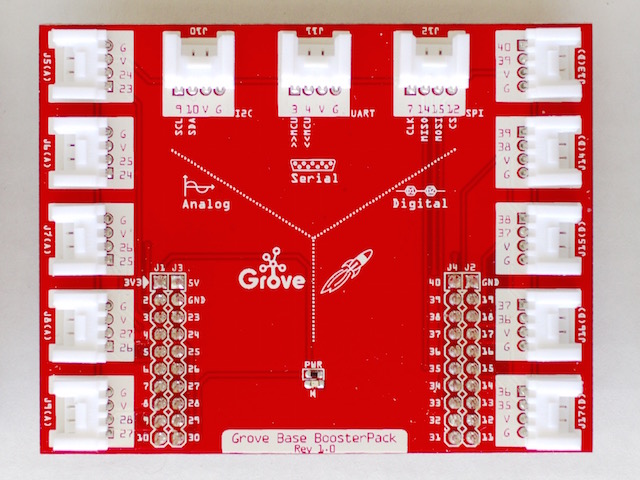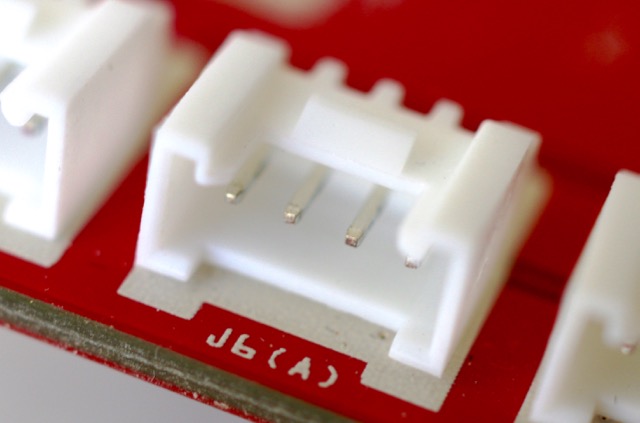Grove BoosterPack
|
The Grove system by Seeed Studio features a normalised 4-pin connector for a wide range of sensors and actuators, whatever the connection or bus used, analog, digital, I²C or SPI.
The main benefit is building prototypes in a fast and clean way. Just take the module you want to play with, connect the cables, upload the sketch and voilà, you're ready! Seeed Studio has a long list of sensors. Just check they operate at 3,3V as the Launchpads. |
Hardware
|
The package includes the BoosterPack, the modules, 10 cables and a nicely printed manual.
The booklet mentions different LaunchPads the Grove BoosterPack can work with. The recommended LaunchPad is the MSP430F5529, with a 40-pin connector. The MSP430G2553 is listed, but the 20-pin connector is limited. Some connections are still possible, but require shunts —e.g. between pin 6 and 26. Unfortunately, the shunts aren't provided. The booklet also mentions the CC3200, erroneously. The CC3200 LaunchPad has analog inputs limited to 1,47 V, so using it with the Grove BoosterPack with standard 3,3V analog may damage the CC3200. |
Software
|
There's a library for Energia with examples for most of the modules. Once you've understood the basic operation of the modules, feel free to combine them for more sophisticated models!
The examples provided need to be checked, as the ports used may differ from one MCU to another. It is a good idea to use the pins numbers instead of the pins names —e.g. 15 instead of P3_0 on the F5529— in order to ensure portability across different LaunchPads. The booklet provides step-by-step explanations, from basic to elaborate examples. |
Pins Map
|
Contrary to other BoosterPacks, the pins aren't defined by the BoosterPack but by the LaunchPad. For example, the same pin 15 on connector J12 can be analog output P3_0 or I²C data or SPI MOSI, Depending on the configuration of the MSP430F4429.
|
Conclusion
|
The MSP430F5529 is the recommended LaunchPad for the Grove BoosterPack.
|
Pros
|
Cons
|
Wrap-Up
|







